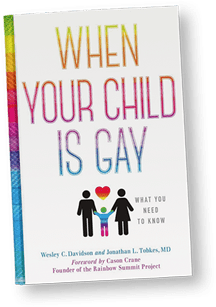March is Bisexual Health Awareness Month. In its eighth year, it was founded by the Bisexual Resource Center. Its purpose is to “raise awareness about bisexual and community’s social, economic, and health disparities, advocate for resources, and inspire actions to improve bi+ people’s well-being.”
Why #BHAM Is Needed
In a recent Gallup poll, over HALF of LGBT adults (54.6%) of LGBT adults identified as bisexual. According to biresource.org, bisexuals make up just one half of the larger LGBTQ+ population, yet they receive less than 1% of all funding that supports LGBTQ advocacy. Trans people and people of color are more likely to identify as bisexual. Awareness is needed, as Queer forty.com states, because only 29% of people report personally knowing a bisexual as opposed to 73% of people who know a gay or lesbian person.
Because bi people have trouble being recognized as “bi,” they feel erased. They are told to “get off the fence” and choose which team (straight or gay) they prefer. They are misunderstood, harassed, and lack social or legal support systems. This isolation and alienation bring on psychological difficulties.
Bisexual Youth
It is very apparent that this minority group feel on the outside. On the internet, they have the highest level of being bullied, threatened or harassed. Forty-four percent of bi-youth were bullied about their weight or physical appearance one or more times during the past month, according to queerforty.com. Compared to gay male youth, bisexuality is associated with a history of forced or unwanted sex among female high school students. The bisexual male youth were 5.4 times as likely to have been threatened with outing by a date or partner compared to lesbians, and bisexual female adolescents were two times as likely to have reported sexual abuse by a date or partner.
To make matters worse, compared to gay youth peers, bisexual youth are less likely to be out to their loved ones. Parents, when told of a child’s bisexuality, will often say “this is a phase.” “You couldn’t be!” Another form of “erasure.”
Health Disparities
There is a greater attempt at suicide among bisexual youth than gay, lesbian or heterosexual youth, according to biresource.org. They experience higher rates of anxiety, depression and other mood disorders compared to heterosexuals, gay, and lesbians. Although bis have higher rates of heart disease, all cancers, and have risky drinking levels higher than gay and lesbians, as well as smoking habits, they are roughly three times less likely to come out to their health care providers than gay men and lesbians, according to MAP, Movement Advancement Project.
What’s Up, Docs?
This reticence is caused by fear of criticism, lack of training by the doctor in LGBT health issues as well as presumption by the doctor that the patient’s partner is heterosexual. Many doctors do not use affirming gender-inclusive language. In fact, compared to 13% of gay men and 10% of lesbians who do not disclose their sexual orientation to their healthcare provider, 39% of bisexual men and 33% of bisexual women report not disclosing their sexual orientation. Because they are less likely to access health care services, bi+ adults are more likely to be uninsured and live below the poverty line.
How To Be An Ally To the Bi Community
- You can support Bisexual youth through The Trevor Project, a national 24-hr. toll free, confidential hotline for LGBTQ youth.
- Order online “Coming Out as Bisexual to your Doctor” or “Resource Guide to Coming Out as Bisexual” from the Human Rights Campaign. The largest LGBTQ Advocacy group and political lobby organization in the United States.
- From Bisexual Resource Center: “Mental Health in bisexual and community: biphobia, bierasure and getting Help.” “10 Tips on having bi-inclusive elder programs and Services.” “How to be an Ally to a bi+ person,” “Pan & Bi: A Handy Guide.”
- From MAP: “A Closer Look: Bisexual Older Adults.”

When Your Child Is Gay: What You Need To Know
For more detailed advice, see book, co-authored with a mother of a gay son and a psychiatrist, Jonathan L. Tobkes, M.D.